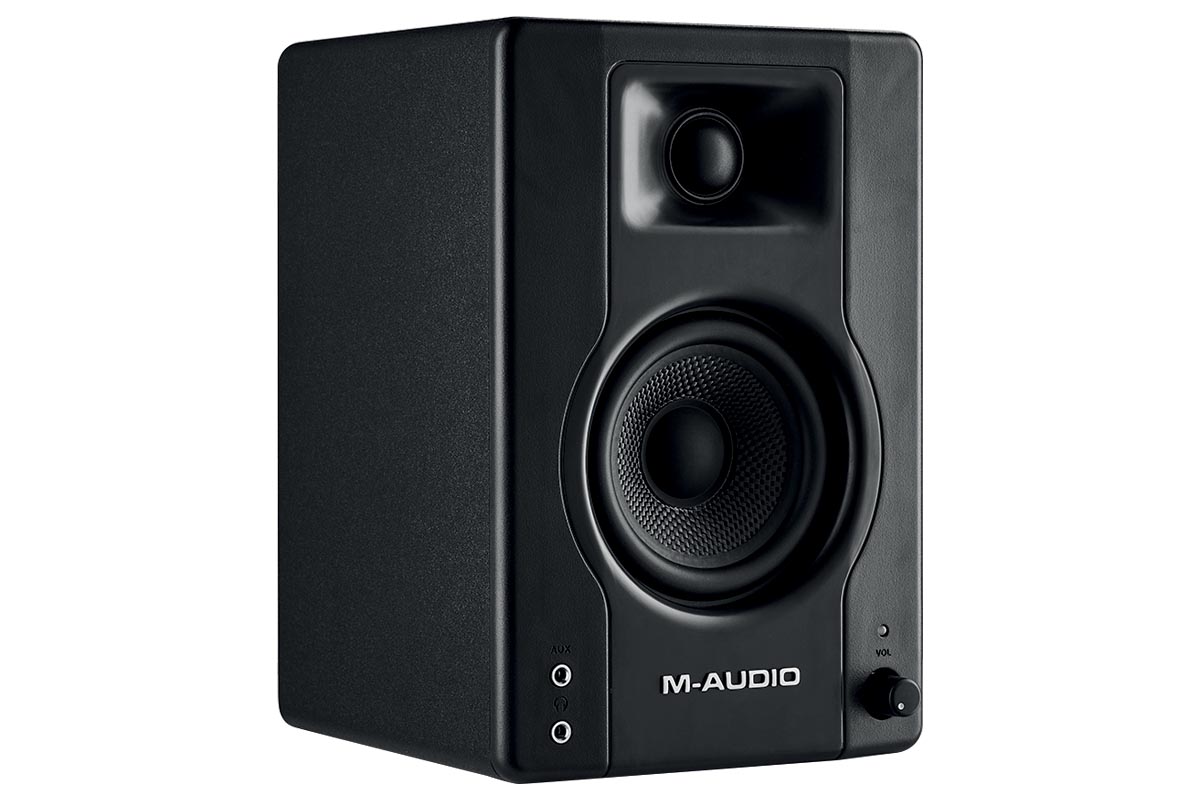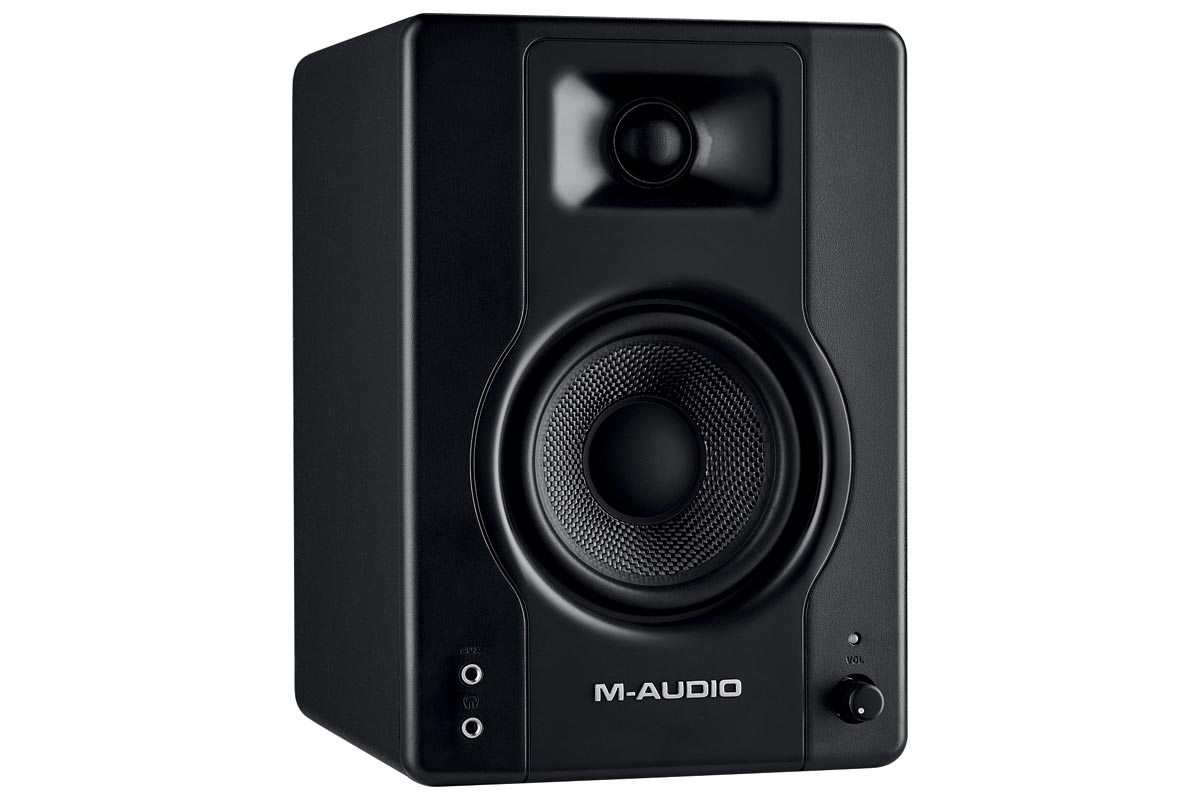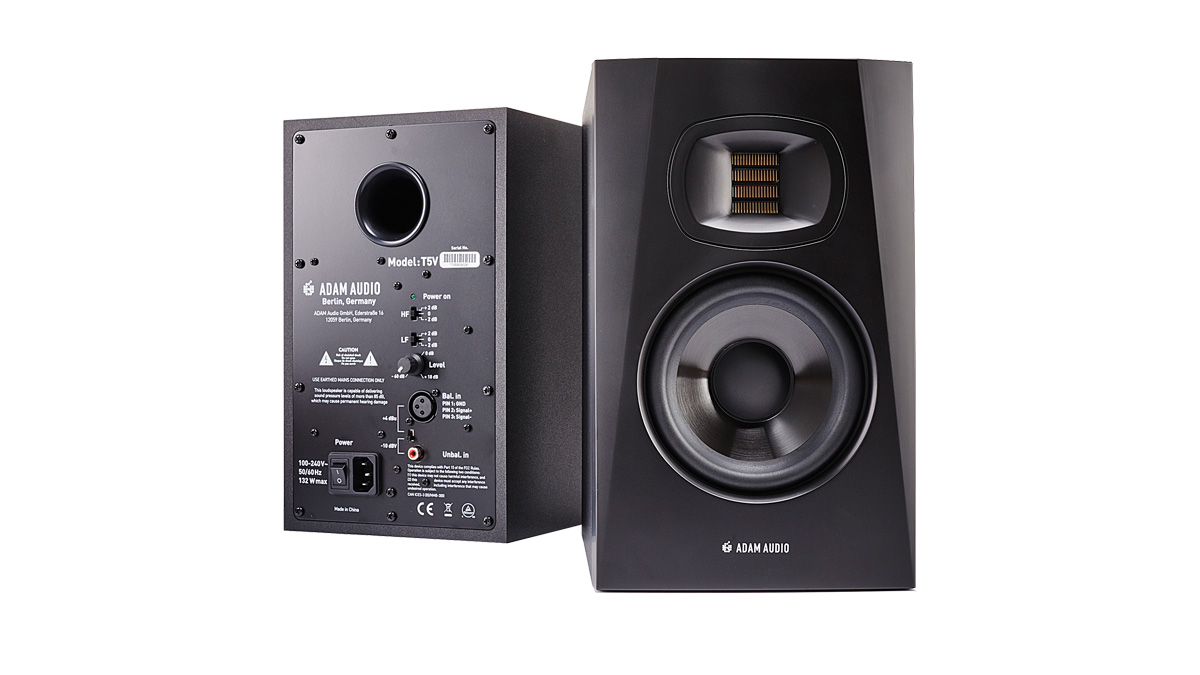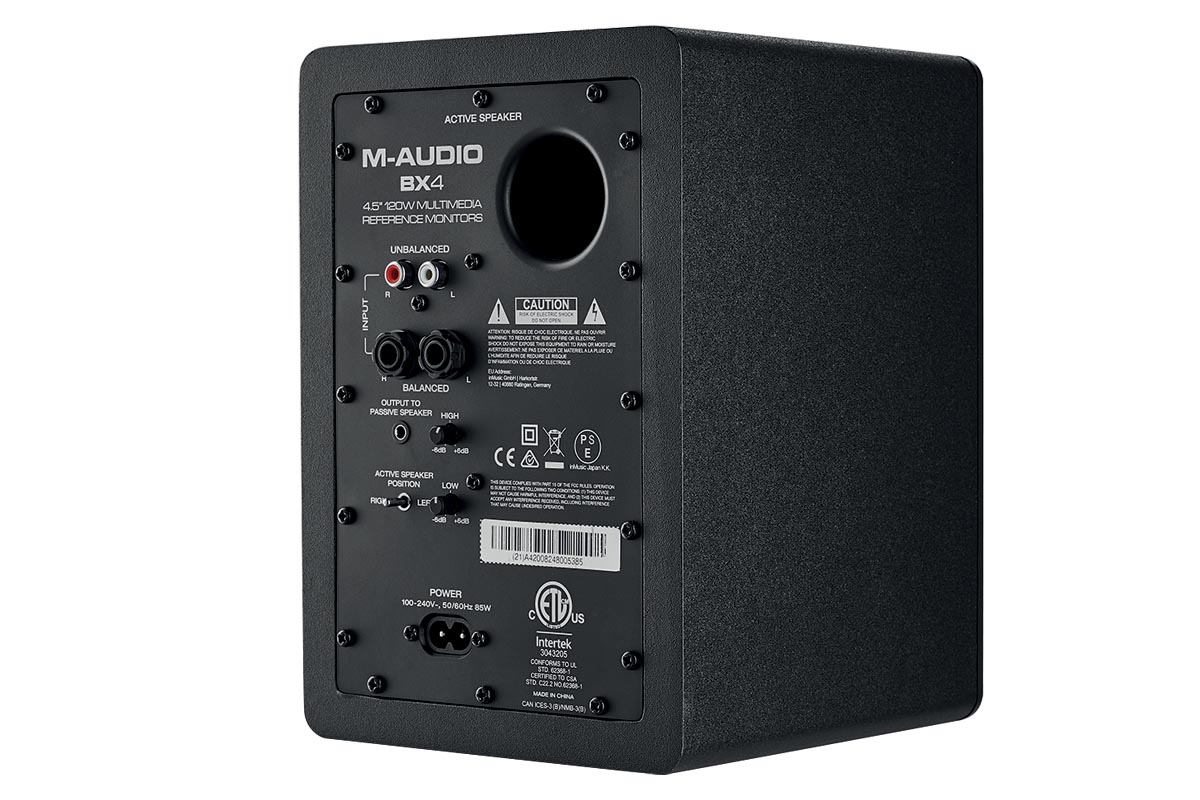MusicRadar Verdict
Compact and convenient, M-Audio’s new BX monitors expand the appeal of this established range and do so at an incredible price.
Pros
- +
Compact, stylish design.
- +
Space-efficient, active plus passive monitor configuration.
- +
Auxiliary input.
- +
Headphone output.
- +
Ported design provides useful bass extension.
Cons
- -
Lack the scale of larger nearfield monitors.
MusicRadar's got your back
What is it?
M-Audio’s long-established BX powered studio monitor range is aimed at project and home users, and the latest designs are their most compact yet.
Built around 3.5” (BX3) and 4.5” (BX4) Kevlar LF drivers and the same 1” silk dome tweeter, the BX3 and BX4 have identical features and very similar prices (£85 and £100) so whichever one you go for will probably boil down to size considerations as much as anything else.
The monitors are powered (2 x 25 Watt RMS) but audio inputs and mains power are supplied to one active speaker, with the second passive speaker connected via the included 3.5mm TS interconnect cable.
Both balanced and unbalanced inputs are provided (a pair of TRS jacks and RCAs respectively). In practice, the BXs are very easy to set up and with only one power connection and stereo inputs, cabling is tidy. You can also specify left/right on the active monitor, so you can position the active speaker to whichever side suits.


Performance and verdict
The BX3 and BX4 are rear ported so work best with some space behind them. That said there’s both high and low-frequency EQ (+/-6dB for each) providing quite a bit of tweaking. And of course, with all controls on the active unit, you only need to make one set of adjustments. Admittedly this also restricts the option to apply different EQ to each side, but we wouldn’t expect that sort of flexibility at this price.

• Adam Audio T5V
Adam’s desire is to make the T5V your first Adam monitor, and judging by what we’ve heard here, it could easily make you a fan for life.
• Yamaha HS5
For sheer accuracy, however, they're hard to beat at this price range. Get your mix right on these and it'll sound fantastic anywhere.
The global control theme follows through to the front panel, where you’ll find the global level control (this also doubles as an on/off switch), headphone output and auxiliary input.
The auxiliary is very handy if you want to quickly plug up your tablet or phone, and it will automatically override the main input. It also follows the active monitor left/right setting, so stereo channels are consistent whatever your source.
The rear-ported design successfully extends the bass delivery and further low end can be added from the bass EQ, although go too far and you’ll mask the low mids.
Meanwhile, the high-frequency EQ sounds quite sweet and we found a bit of boost worked well in a less lively space. In summary the overall sound of the BXs is pretty good albeit slightly sweetened. The stereo image is also good and the tweeter waveguide delivers a nice broad sweet spot.
Between the two models inevitably we prefer the BX4s as they deliver bigger scale. That said, we were surprised by how workable the BX3s were, and both sizes can go surprisingly loud.

Convenience is very much the name of the game with these BX monitors, and they are clearly aimed at a much broader market than their larger nearfield studio monitors, but we like the flexibility they offer and they sound reasonable as well.
So whether you’re working to a tight budget or if you simply want a decent flexible compact monitor set up for your production, podcasting or multimedia needs, these new BX monitors can offer you great value.
MusicRadar verdict: Compact and convenient, M-Audio’s new BX monitors expand the appeal of this established range and do so at an incredible price.
The web says
"For the money, these are good little speakers, well suited to small rooms. For DJ practising, podcasting, livestreaming, even beat making, they’ll be good enough. I wouldn’t use them for full-on music production: they are too small and not as accurate as much more expensive speakers. But, they would make a nice second pair of “reference” speakers in a bigger studio."
Digital DJ Tips
Hands-on demos
M-Audio
John Mike
Edward Smith
Specifications
- KEY FEATURES: BX3: 3.5” Kevlar LF, 1” silk
- dome HF, 120-Watt total peak power / BX4: 4.5” Kevlar LF, 1” silk dome HF, 120-Watt total peak power
- FREQUENCY RESPONSE: 80Hz–22kHz
- DIMENSIONS: 140 x 145 x 208mm
- FREQUENCY RESPONSE: 69Hz – 22kHz DIMENSIONS: 156 x 175 x 225mm
- PRICING: BX3 £85, BX4 £100
- CONTACT: M-Audio
Jon is a London based platinum award winning mixer, producer, composer and club remixer with a diverse CV that spans dance, pop, rock and music for media. He’s also a long term contributor to MusicRadar's music technology tutorials and reviews. Whether working alone or collaborating he usually handles final mixdowns, so you’ll also find MusicRadar peppered with his handy mixing tips.
“Every note counts and fits perfectly”: Kirk Hammett names his best Metallica solo – and no, it’s not One or Master Of Puppets
Ranked: Bon Iver's albums, from Sable, Fable to For Emma, Forever Ago
“Its mission is simple: unleash the power of any amplifier or line-level source without compromise”: Two Notes promises a “watershed” in tube amp control with the Torpedo Reload II











